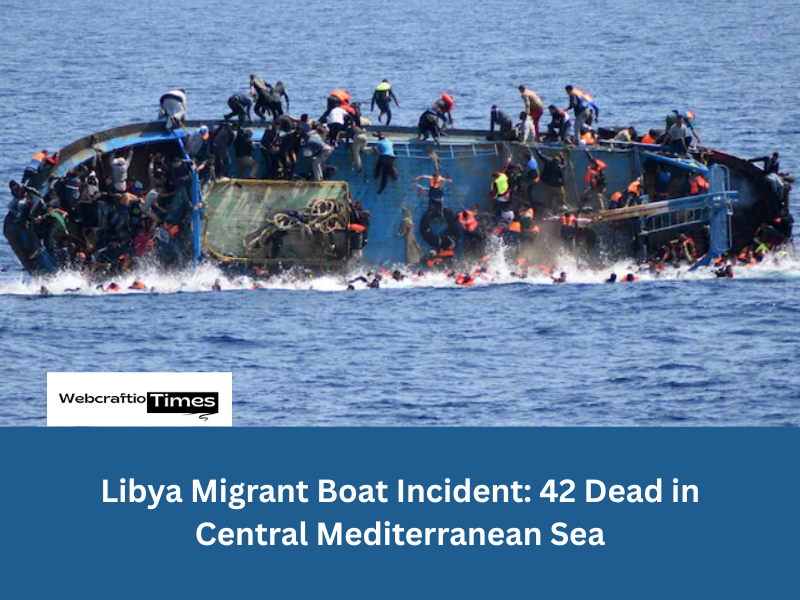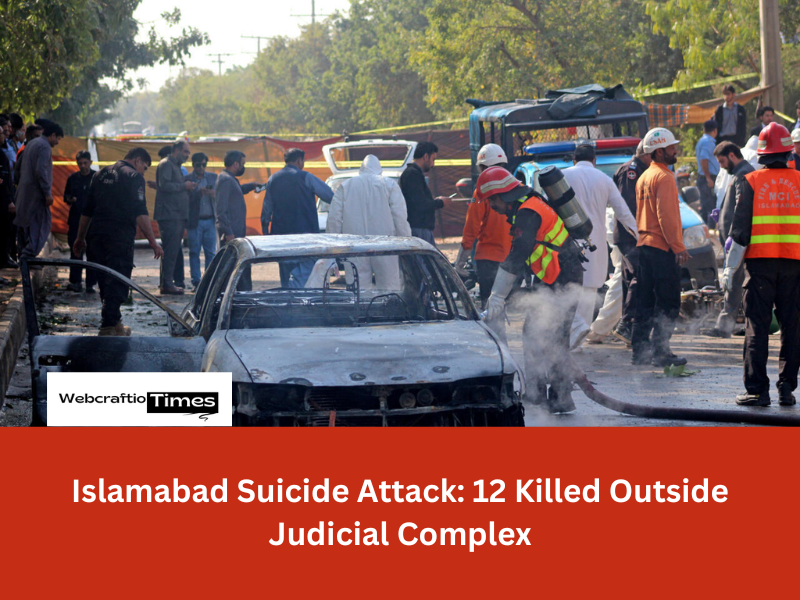A devastating disaster unfolded in the Central Mediterranean last week. The latest Libya Migrant Boat Incident has tragically resulted in 42 people presumed dead. This crisis highlights the unrelenting dangers faced by those attempting the perilous sea crossing.
Only seven survivors were rescued after their rubber boat capsized off the coast of Libya. International organizations immediately renewed their urgent calls for action. They seek safer pathways for migrants and stronger regional search and rescue efforts. The International Organization for Migration (IOM) confirmed the tragic death toll. The horrific Libya Migrant Boat Incident adds to the already staggering number of lives lost this year.
Anatomy of a Disaster: What Happened in the Libya Migrant Boat Incident
The doomed voyage began in the early hours of Friday, November 3rd. A rubber boat carrying 49 migrants and refugees departed from Zuwara, a key launch point in northwest Libya. Forty-seven men and two women were aboard the vessel. They desperately hoped to reach Europe.
The journey quickly turned catastrophic. High waves battered the fragile boat. Only six hours into the crossing, the engine failed. The sudden failure pitched all 49 individuals into the rough, frigid sea. This particular Libya Migrant Boat Incident saw immediate and total loss of control.
You May Read This: Russian Attack on Ukraine: Millions Face Cold After Grid Failure
Forty-two people vanished beneath the waves. The seven survivors clung desperately to the wreckage. The IOM confirmed the nationalities of those presumed dead. Twenty-nine were from Sudan. Eight were from Somalia. Three were from Cameroon. Two were from Nigeria.
Drifting for Six Days: The Rescue
The seven survivors faced a terrifying ordeal. They were adrift for six agonizing days. They fought the elements, enduring thirst, hunger, and exposure. Their tiny piece of wreckage was their only salvation.
On Wednesday, November 8th, hope finally arrived. Libyan authorities launched a search and rescue operation. They located the survivors near the Al Buri Oil Field. The seven men were immediately pulled from the water. They were suffering from severe exposure and exhaustion. Four survivors are Sudanese. Two are Nigerian. One man is Cameroonian.

Libyan officials brought the rescued men to Tripoli. The IOM provided crucial emergency assistance. Survivors received immediate medical attention. They also received food and water. Their harrowing testimony confirmed the worst fears. They recounted the rapid sinking of the boat. They detailed the immediate loss of the other 42 passengers. The tragedy of this Libya Migrant Boat Incident became tragically real.
The Central Mediterranean: The World’s Deadliest Migration Route
This recent disaster is not an isolated event. It is a recurring tragedy on the Central Mediterranean Route. This passage from North Africa to Europe is globally recognized. It is the world’s most perilous maritime migration crossing.
The humanitarian crisis continues to escalate. The IOM reports that the overall death toll for migrants in the Central Mediterranean has soared. It officially passed 1,000 lives lost in 2023 alone. This single figure represents only documented losses. The actual number is likely much higher.
Libya’s ongoing political instability plays a crucial role. It has made the country a primary hub for human smuggling. People fleeing war, poverty, and political persecution flock to the Libyan coast. They use it as a launching pad for their risky journeys. Smuggling networks exploit the desperation of these vulnerable people. They use unseaworthy vessels like the one involved in the Libya Migrant Boat Incident.
The dangerous lack of coordination among European and North African search and rescue entities exacerbates the risk. Delayed or insufficient response times cost lives. International law demands timely assistance to vessels in distress. Many observers note this law is often poorly implemented in the region.
Urgent Calls for Action to Prevent Another Libya Migrant Boat Incident
International organizations have responded with forceful calls for change. The IOM and the United Nations High Commissioner for Refugees (UNHCR) are urging immediate action. They demand stronger, unified search and rescue mechanisms. These should operate across the Mediterranean basin. They must also work closely with all littoral states.
Furthermore, humanitarian groups press for expanding legal, safe, and regular migration pathways. These alternatives would reduce reliance on dangerous smuggling networks. They would offer people legitimate options to seek asylum or work. This would directly undercut the smugglers’ business model.
The world must not forget the victims of the Libya Migrant Boat Incident. Their lives were cut short by a deadly combination of desperation and neglect. Their memory must spur political leaders into meaningful action. Only a determined, cooperative effort can prevent further tragedies at sea. We must address the root causes of migration. We must provide safer routes. The Mediterranean must stop being a graveyard for the world’s most vulnerable.
Frequently Asked Questions (FAQs)
1. What was the outcome of the Libya Migrant Boat Incident?
The incident resulted in 42 migrants presumed dead or missing after the rubber boat capsized. Only seven survivors were rescued.
2. How many people were on the boat when it left Libya?
The vessel was carrying a total of 49 migrants and refugees (47 men and 2 women) when it departed from Zuwara, Libya.
3. What caused the boat to capsize?
High waves caused the boat’s engine to fail approximately six hours into the journey, which resulted in the vessel overturning and all passengers being thrown into the sea.
4. Which organization confirmed the casualty numbers?
The casualty figures and details about the incident were confirmed by the International Organization for Migration (IOM), a United Nations agency.
5. Why is the Central Mediterranean crossing considered so dangerous?
It is the world’s deadliest migration route due to the use of unseaworthy, overcrowded boats, the long journey time, and gaps in search and rescue operations.



